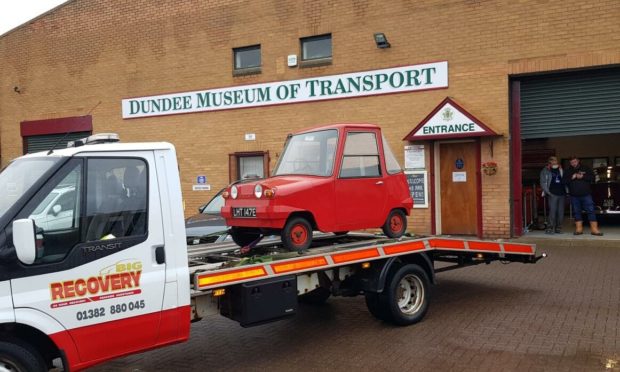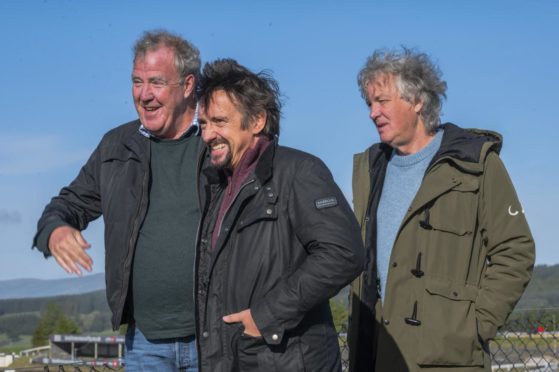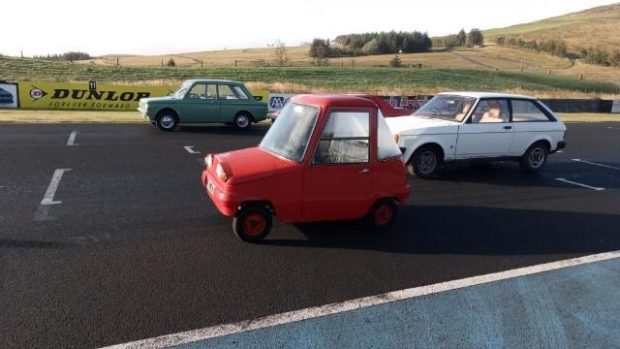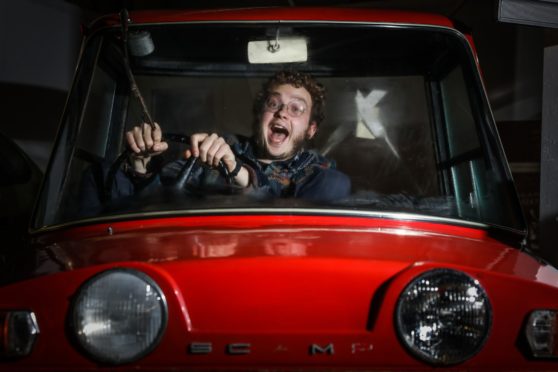Jeremy Clarkson, Richard Hammond and James May are well known for rampaging round the world in high-performance supercars.
But this year’s series of The Grand Tour has the trio crawling round Knockhill Racing Circuit in a 35mph “Postman Pat” car.
The low-speed electric car, known as The Wee Scamp, is owned by Dundee’s Museum of Transport, which loaned it out for the bizarre segment on the latest Amazon Prime series, which begins on Friday.
The presenters had originally planned to film this year’s show in Russia – but were confined to the UK due to Covid.
The aptly named Lochdown follows them across the roads of Scotland to discover why classic American cars never grabbed the nation’s attention in the same way they did across the pond.
In one segment they test the Scamp – one of the first electric cars to be built in Scotland – at Knockhill racing circuit.
Museum chairman Peter Webber was stunned to receive a call from the production team, asking to borrow a car.
He said: “They were looking to assemble as many Scottish-built vehicles as possible. They wanted to use them at Knockhill, where they were going to film something.
“The three of them were turning up in American cars and we were asked to provide the Scamp.
“It was transported to Knockhill and used around the circuit and had a starring – or not so starring – role. We won’t know until the series is released.”
It was doomed to fail
The Scamp, which looks more like something Postman Pat would be seen driving than Jeremy Clarkson, did not take off in the same way American cars of the 70s did.
Built in the mid-1960s, the Scottish Aviation Scamp has a top speed of 35mph, a range of just 20 miles and takes around eight hours to fully charge.
All of these teething issues meant the car never really had much of a chance for mass production.
Peter said: “It would have never been viable with the short range and low top speed. It was ahead of its time really.
“The technology wasn’t there. Lithium Iron batteries, which is what all electric cars now use, were not available, they hadn’t come to market. Lead-acid batteries, which is what they used, were heavy, low capacity and therefore had very minimal range.
“It was a valiant effort, but sort of doomed to fail.”
Just 12 of these cars were ever built, and even fewer survive.
Peter said fondly: “They were not a success. It wasn’t the most attractive car and it didn’t do very well.”
The car was put to the test on the Motor Industry Research test track where the suspension collapsed almost immediately.
Peter added: “It wasn’t Scottish car building’s finest hour. It was really the death knell.”
Paving the way for electric cars
However, it wasn’t all doom and gloom for the Scamp.
While the car never really took off, Peter believes these first electric cars needed to fail for the modern one to take it’s place.
“While we might look at it now and think what on earth were they doing, it was all part of the development”, Peter said. “We’re talking 50 years ago, but look at where we’ve got to.”
The car is currently taking a starring role at the Glasgow Science Centre as part of a COP26.
The exhibition looks at how small, local changes can make a big impact in combating climate change.
Grand Tour will be released on Amazon Prime on Friday July 30.



